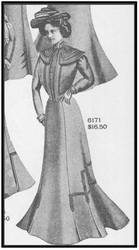
Pioneer stories are essentially people stories, and a reading of local histories reveals a great cast with fascinating stories. There are the early birds: those that were ahead of the crowd, built the first shacks and soddies, and planted the first tentative crops. There are the founding fathers, usually ambitious forward-thinking farmers and merchants. There are the contractors and tradespeople, who, with the coming of the railway and the visit of the surveyors, began the building boom. There are the clergymen and teachers.
All too often the stories are mainly about men, but not always.
Survivors
First, some background from the Hartney News section of Brandon Sun Weekly on February 9, 1893:
“The Misses Edwards and the McArthur family of town were all laid low on Saturday morning by escaping gas from a coal stove. Dr. Gahan was summoned, and all progressing favourably.”
This is a story with a happy ending from an era when fires and related mishaps caused numerous deaths. In fact, for the Edwards sisters it was their second brush with death. The Minnedosa Tribune in June 24, 1887 reported that:
“The house of Mr. Jas. Edwards, a farmer near Menota, was burned on Thursday night last week. Three children, aged seven, twelve and fourteen, were burned to death. Mr. Edwards and wife jumped from an upstairs window carrying two children with them. Mr. Edwards had just moved into his new house the day before. The fire is supposed to have originated from a broken stove.”
This was an all- too-common occurrence in pioneer times.
A Career Path
Alice and Ida, who were carried to safety, had moved to a farm in the Menota district, east of Melita, in 1884 with their family. This was an era when the conventional career options for young ladies were limited. The most common path was marriage – as soon as possible after completing school – an option that depended upon the availability of nearby eligible bachelors, emphasis on the “eligible” part.
Another option was to accept work in the community; teaching for example was respectable. Working in a retail shop might also be acceptable. Both were seen as temporary options - the assumption being that marriage was the goal. The third, and less traveled road, was to move away either for additional schooling or to pursue a career.
What did Mr. and Mrs. Edwards think when Alice and Ida, at quite a young age, took the unusual step of moving to a nearby community and going into business? They probably helped. One has to remember that in those days, not only couldn’t women vote, they faced many obstacles in the business world and usually needed support to own property.
By 1894 the girls were running a successful dressmaking shop in Hartney, offering the latest fashions, wedding gowns and party dresses, often paired with hats made by the milliner at A.E. Hill & Co. The girls had apprenticed with a dressmaker in Melita and were putting their skills to good use. They soon employed assistants and, in their efforts to bring style to the masses in Hartney, they would travel to exotic locales such as Minneapolis to keep in touch with that larger world of fashion.

A Happy Ending?
In this case the choice to move to another community and go into business did indeed lead the sisters toward that other option: marriage. On June 27, 1900 Ida married A.E. (Arthur) Fry, an influential Hartney businessman. The wedding took place in the Melita Baptist Church. Standing with them were Ida’s sister, Alice, and her fiancée, Thomas Hopkins. Not to be outdone, they announced their marriage at the wedding reception at the Edwards’ home and tied the knot then and there!
It wasn’t that uncommon for a married woman to run a business. As the sign indicates, Mrs. R.H. Richardson ran a successful shop in Melita in the early 1900’s.
. . . . .
Author: Ken Storie
Sources:
Hartney and District Historical Committee. A Century of Living - Hartney & District 1882 – 1982. Steinbach. Derksen Printers, 1982.
Photos:
Hartney and District Historical Committee. A Century of Living - Hartney & District 1882 – 1982. Steinbach. Derksen Printers, 1982. pp 312
Melita - Arthur History Committee. Melita: Our First Century. Altona. Friesen Printers, 1983 pp 386
